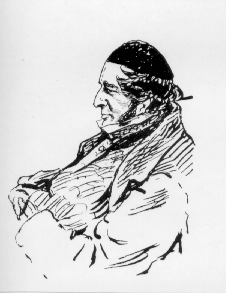 |
 |
 |
 |

Hogg matriculated at Oxford, in the fall of 1810, where he met Shelley. Soon the two were bosom friends. A result of their joint intellectual passions was a dry philosophical pamphlet intended to tweak the nose of authority, which Shelley had printed under the title, The Necessity of Atheism (1811). Less for its content, which is mainly derived from the skeptical arguments of David Hume, than for their refusal to come clean about its production, both men were expelled from the university. Although their parents separated the two, they soon found means of continuing their ardent friendship. Shelley even attempted to interest both his wives into extending a welcoming friendship for Hogg into more intimate physical terms, though there is much doubt whether this ever really came to pass. Yet, this curious pattern had a remarkable consequence, for when Jane Williams, widow of Edward Williams, the young friend who drowned with Shelley off the coast of Italy in 1822 returned to London, Hogg, a successful barrister since1817, met and married her.
Three decades elapsed before Hogg turned to the biography that recounts in great, though questionably accurate, detail the years of his and Shelley's association. The first two volumes of The Life of Shelley appeared in 1858. Its generally self-serving nature and tendency to look down its nose on its subject infuriated Shelley's son and other surviving friends, and the project was discontinued for want of their support.